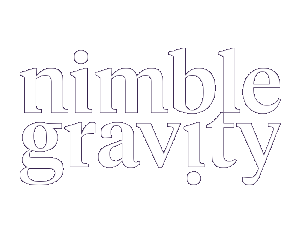When machines can generate endless content and optimize every interaction, the real differentiator becomes something they can’t fake: authenticity. The best brands don’t bend to trends, they build tribes. They’re unapologetically themselves.
Harley-Davidson doesn’t design bikes for eco-conscious commuters. Supreme doesn’t care if their drops alienate casual streetwear fans. Even in an age of hyper-personalization, these brands thrive by staying rooted in who they are.
So how can modern brands keep that same sense of authenticity while leveraging AI and other technologies that often push toward generic optimization?
Here are 10 ways to stay real and human in the age of AI.
1. Start with Unshakable Brand Values
AI can generate content, optimize pricing, and predict behavior, but it can’t create values. Those must be forged by people. Your brand’s core beliefs must remain the north star.
Before automating a single customer interaction, revisit your brand’s DNA. If it doesn’t feel human, it won’t resonate, no matter how smart the system.
2. Use AI to Amplify Identity, Not Edit It
AI should be your amplifier, not your editor-in-chief. Don’t use it to smooth out your tone or soften your edges, use it to scale your voice, not dilute it.
For example, if your brand is sarcastic, irreverent, or minimalist, train your tools to reflect that. Let AI help you say more of what you mean instead of less.
3. Design for a Tribe, Not a Demographic
The danger of too much AI-driven segmentation is creating Frankenstein personas that try to please everyone. Instead, take a lesson from brands like Oatly or Darn Tough socks: market to distinct groups of people that match your brand and who you’re targeting.
Your data should reinforce your identity. You want your most loyal customers to feel like insiders.
4. Avoid Algorithmic Homogenization
AI loves patterns, and if you’re not careful, it’ll start generating the same content as everyone else chasing engagement.
Stand out by leaning into what makes you weird, niche, or polarizing. Let your tone, visual language, and product choices break the mold. Consistency matters more than conformity.
5. Keep Human Oversight in the Loop
Yes, AI can write social posts and generate product descriptions, but don’t outsource brand judgment. Keep humans involved in key messaging, creative, and decision-making.
Your brand voice should still pass the “would a real person say this?” test. Authenticity isn’t just what’s said, it’s also how it’s said.
6. Don’t Apologize for Who You’re Not
Trying to be universal often strips a brand of its soul. Own your niche. It’s better to be loved deeply by some than mildly liked by all.
7. Let Customers See the Grit
Authentic brands show their seams. Share behind-the-scenes decisions, highlight internal debates, admit when you’re learning.
In the AI age where everything is polished and “perfect”, transparency becomes a powerful differentiator.
8. Train AI on Your Own History, Not Generic Datasets
If you're using AI to generate branded content, feed it your own style guides, product reviews, customer service transcripts, even founder quotes. The more your tools learn you, the less generic their output will be.
Remember: AI trained on the internet will sound like the internet. AI trained on you will sound like you.
9. Turn Data Into Intuition
Modern brands are drowning in data, but what matters is how it’s interpreted. Use customer data to deepen your understanding of their emotional connection to your brand, not just what they clicked or bought.
What content makes them laugh? What stories do they retell? That’s the signal behind the noise, and that’s where authenticity thrives.
10. Refuse to Be Everything
Talk about exhausting and stressful – yikes! You don’t need to jump on every trend, chase every channel, or serve every market. In fact, I don’t think you can, and stay sane. The strongest brands today are those who opt out, who draw lines in the sand and say, “This is who we are. And this is who we’re not.” (we practice what we preach and have a strong definition of who we are and who we want to work with – we think you should too)
Authenticity isn’t about being more. It’s about being more of yourself.
Let AI Make You More Human
AI is a powerful tool. But tools don’t define brands, people do. Your brand’s job isn’t to become an AI-native content machine. It’s to build meaning, emotion, and connection in a world where most things feel manufactured.
Let AI make you faster, smarter, and more adaptive, but never let it make you generic. Because in the age of artificial everything, authenticity is your last unfair advantage.
In the sake of transparency, this article was written with AI in the loop. Also, two humans who checked, refined, and rewrote things dramatically. It started with title ideas, then was refined and put through a custom trained platform that contains my “voice”. Honestly the first title and rough synopsis sounded nothing like me and frankly it made me want to throw it away. It was originally - "The Algorithmic Brand: Designing Identity in a Data-Driven World". Um, yuck – that sounds like someone going to ChatGPT and saying, please robot overlords, tell me who to be. This was my initial feedback – sent to a human, “this doesn't feel like a me topic in the way it's framed. I think you start to hit on an area that I would write about in talking about the tension of being authentic - when the potential exists to constantly be everything to everyone through personalization and optimization tactics.
I'd rather it be something like 10 ways to remain authentic as a brand in the age of AI. The best brands have always unapologetically been themselves - look at something like Harley Davidson - they aren't trying to compete with moped manufacturers or court environmentalists. I would hope that a brand’s customer data would be so overwhelmingly aligned with their authentic selves that this wouldn't lead to people designing brands to be everything (save for things like Amazon, etc).”
So, we (the humans) adjusted.
I think it would be great to test your already existing brand concept via AI and say things like: Are there any brands that I might be confused with? Does anything in my positioning contradict another part of my position? Does the tone and voice of my brand match my audience? Etc...
So, remember—bleep blorp bleep bleep. (just kidding.... I intentionally used that emdash because for whatever reason, AI has been over indexing on the use of them lately, like by crazy amounts. Ok sorry, I nerded out there for a minute).




